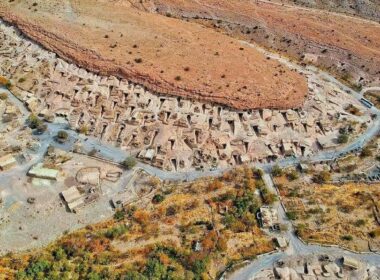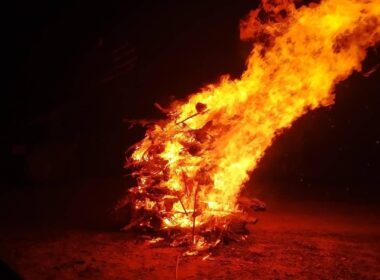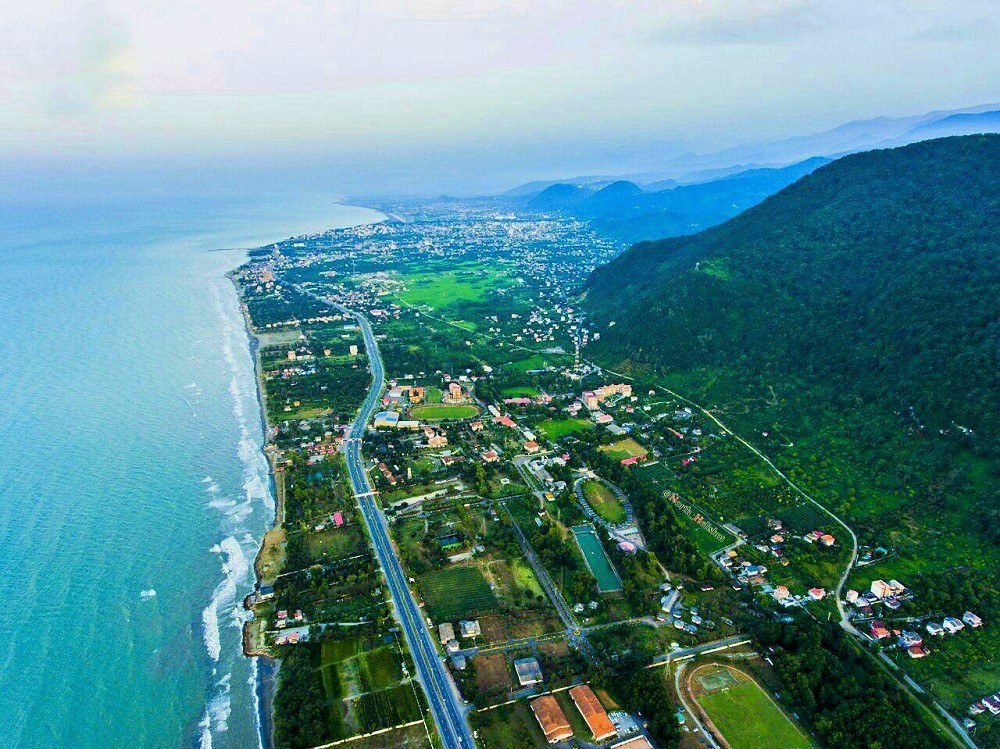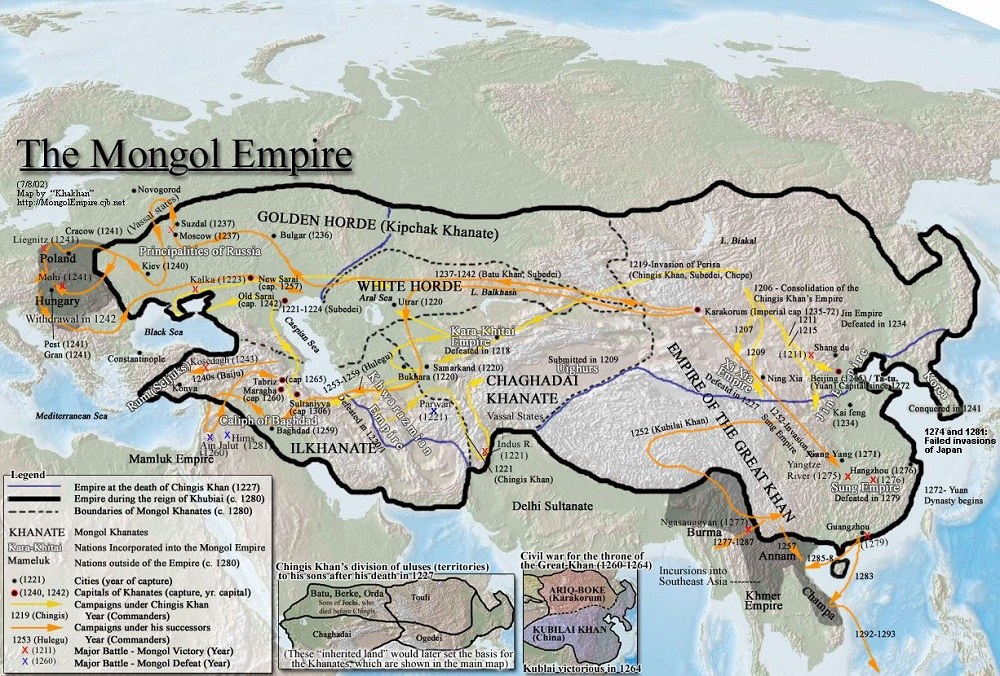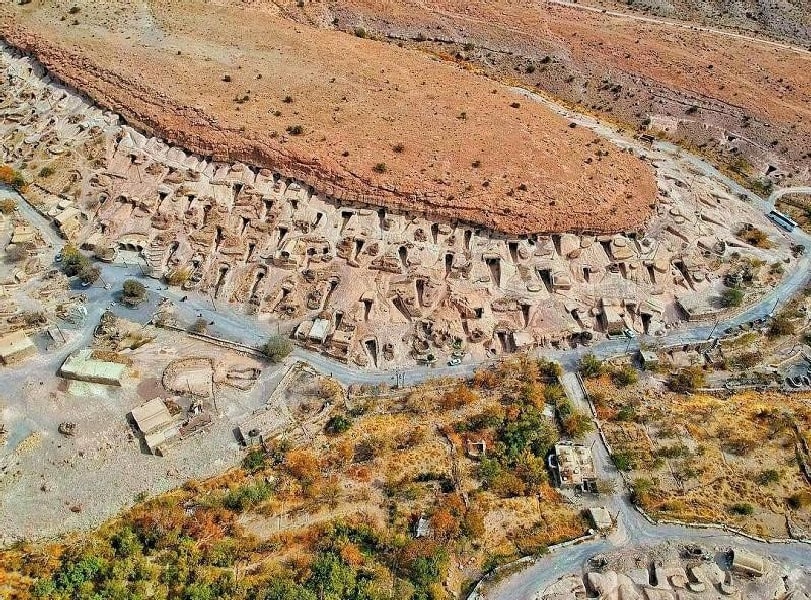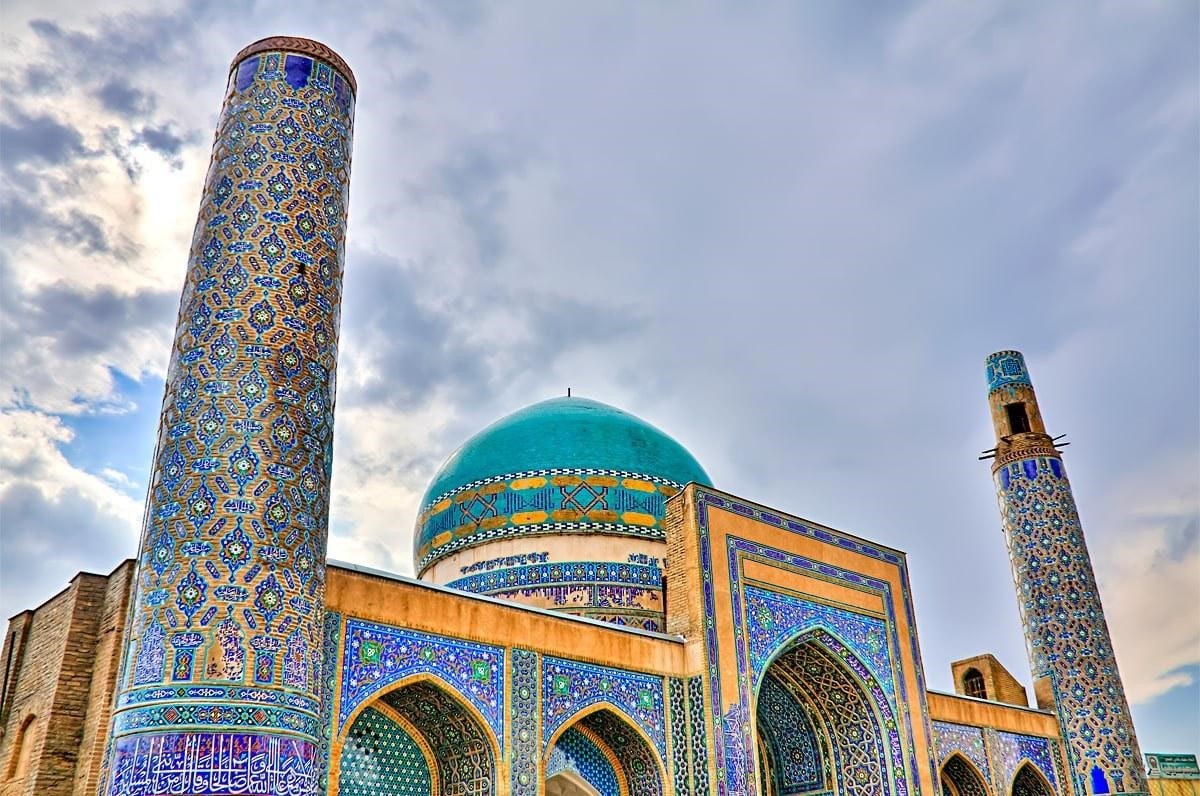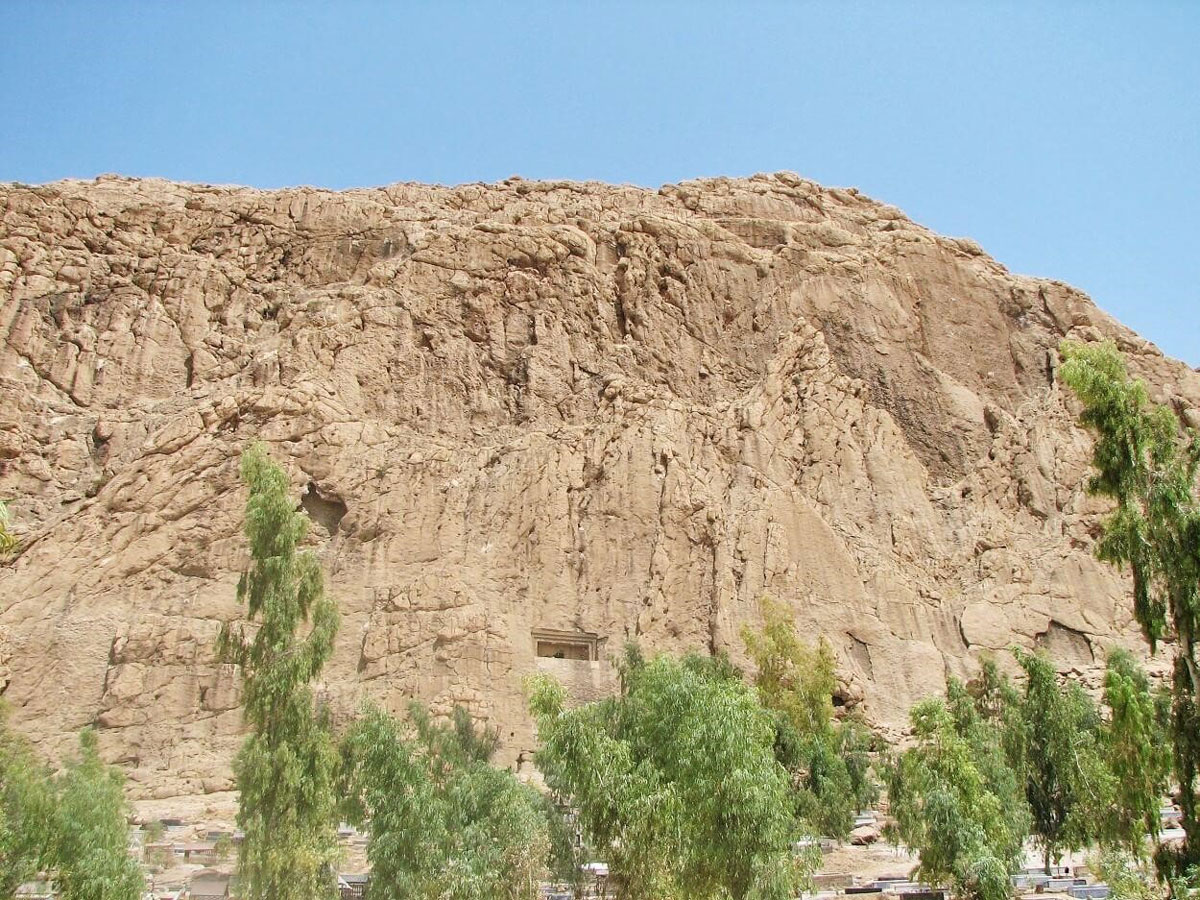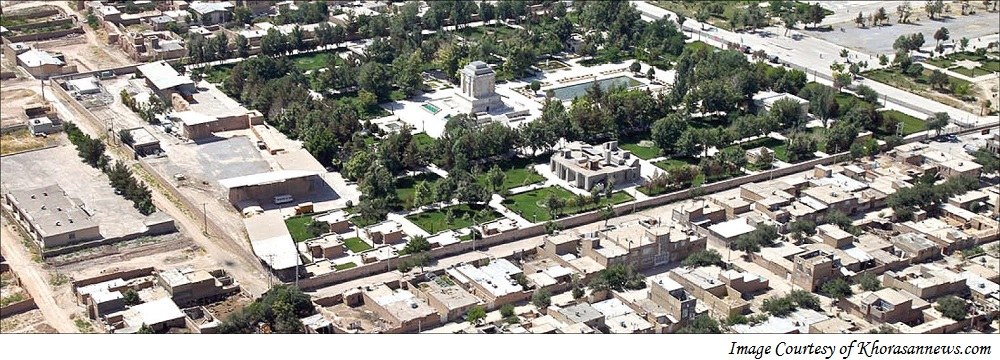
Tous, also spelled as Tos or Toos, is a historical city located in the northwestern Mashhad city, in the Razavi Khorasan Province of Iran. In October 1996, Cultural Heritage, Handicrafts and Tourism Organization of Iran placed Tous City in the Iran National Heritage List.
The cultural landscape of Tous includes monuments of this small city, each one reminding the great men of the history of Iran who played a significant role in the cultural developments of the Iranian people.
The Famous Edifices of Tous cultural landscape
They include:
- Tomb of Ferdowsi
- Haruniyeh Dome or Tomb of Abu Mohammad al-Ghazali, the author of the famous book of the Revival of the Religious Sciences
- Tomb of Mehdi Akhavan-Sales
- Tous Citadel and the Ancient Walls of the city
- Kashafrud River
Many travelers have written about Tous City in the historical source and books, but we are here to explore the most prominent edifices that shape the cultural landscape of the city.
Tomb of Ferdowsi
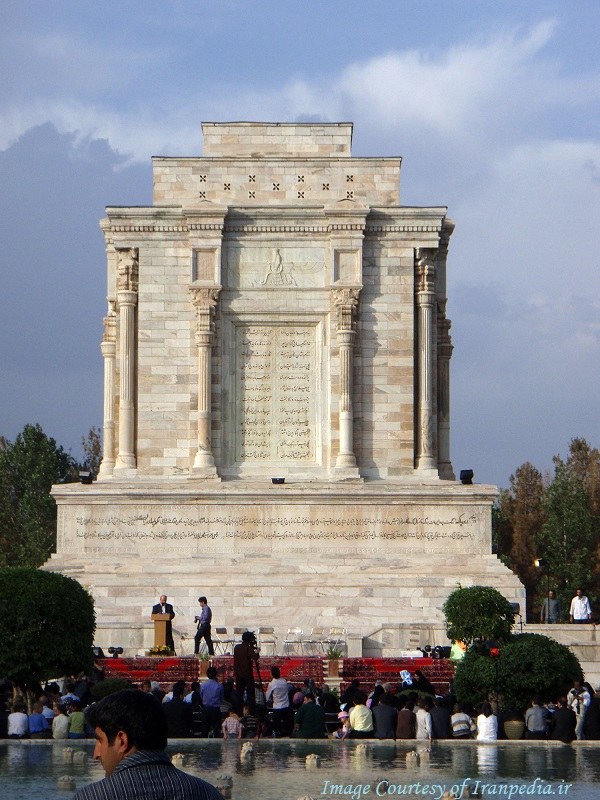
Located in Tous, it is the burial place of Abolqasem Ferdowsi, an Iranian poet well-known for composing national epic poems. By his relentless effort, Ferdowsi had an unparalleled role in protecting the Persian language.
Hakim-e Sokhan (the philosopher of speech), Hakim-e Tous (the philosopher of Tous) and Ostad-e Sokhan (the master of speech) are the nicknames attributed to Ferdowsi.
When the language of knowledge and literature in Iran was Arabic, Ferdowsi succeeded in revitalizing Iranian literature and culture by composing Shahnameh, Persian epic poems. Ferdowsi wrote this book in Persian once Arab occupiers of Iran prohibited writing and composing anything in Persian. They had gone even further by preventing anything published in Persian in Iran.
It is worth mentioning that Ferdowsi spent all his financial resources for thirty years to collect epic stories of Iran in order to express part of Iran’s history. Eventually, when he died, they had to bury him in the only small piece of land remained for him.
During his life, he faced many obstacles, but he consistently pursued his purpose and achieved his goal successfully. If Ferdowsi was not born, maybe today Iranian people would have spoken another language than Persian. Perhaps this language would be Arabic, Turkish or another language.
The Architecture of Tomb of Ferdowsi
Reza Shah Pahlavi opened the tomb of Ferdowsi in 1934 during the Millennium Celebration of Ferdowsi. The current design of the Tomb of Ferdowsi edifice is the artwork of Mr. Hossein Lorzadeh, the Iranian architect. He built the tomb in 18 months and received the Medal of Ferdowsi Award at the Millennium Celebration of the commemoration of this great Persian poet.
The tomb occupies an area of 900 square meters and architects have restored and renovated it several times. In 1969, the engineer Houshang Seyhoun came up with a secondary plan for the tomb expanding it to include the surrounding garden and nearby museum. This expansion contributed significantly to the cultural landscape of Tous.
The garden of the Tomb is about six hectares and has a museum and a library. The tomb itself consists of three parts. The most important part is the middle section. In this section, there is a marble tombstone, located on a marble platform, measures 1×1.5 meter and the height is about 0.5 meter.
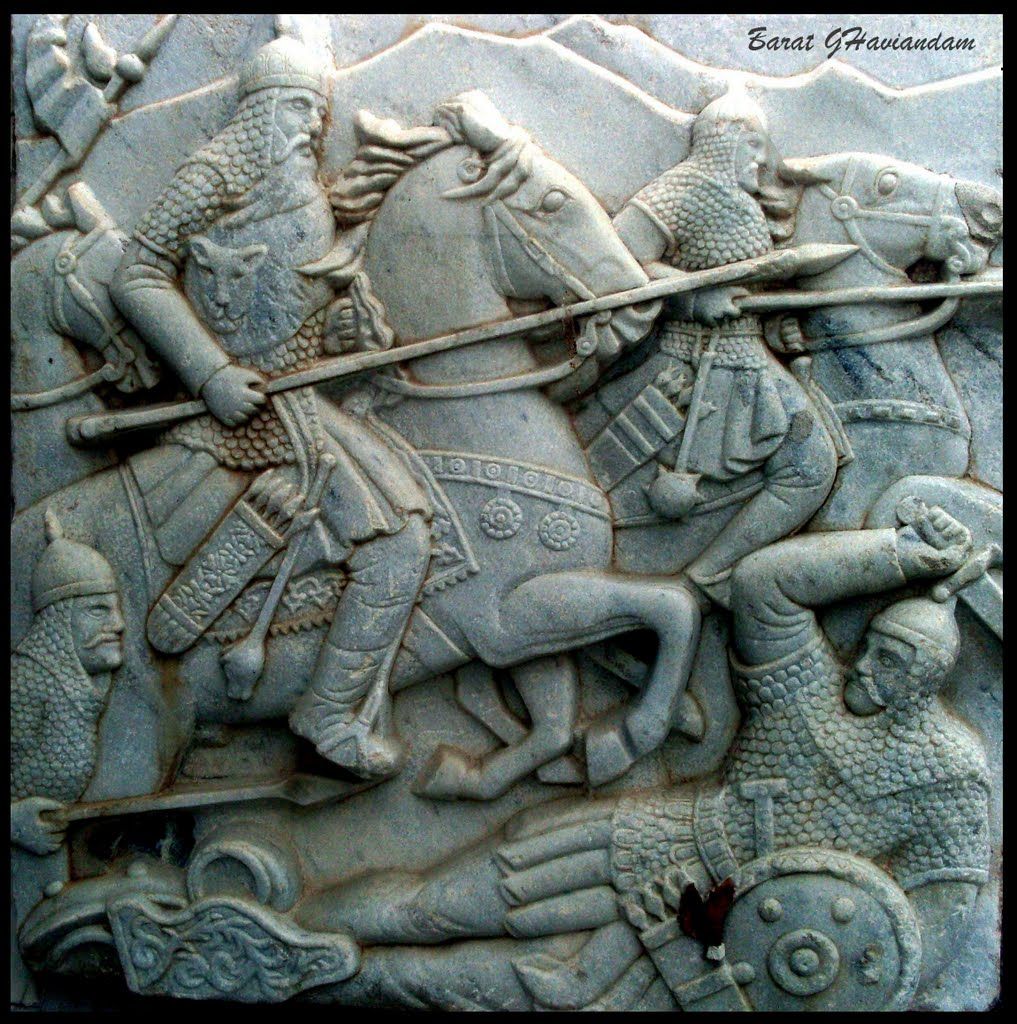
The other part of the Tomb of Ferdowsi is a marble square hall. The architects have decorated the interior with the Iranian tiles. There are also four tall columns with two large capitals in four corners of the hall. The third section is a staircase made of pure marble. The stairway leads to a chamber where one can find many of Ferdowsi’s poems carved on the wall.
The architecture of the Tomb of Ferdowsi reminds us of the architecture of Pasargadae and the Tomb of Cyrus. The illustration of a winged man on the south side of the main building of the Tomb of Ferdowsi reminds us of the architectural features of Persepolis, the ceremonial palace compound of the Achaemenid Empire.
The upper part of the tomb was solid in the first construction, but in the renovations, the architects decided to restore it hollow. Mosaic tiles and decorative elements of the Achaemenid period and Ferdowsi era decorate the interior roof of the building. In addition, there are the local rocks from Tous area decorating the walls of the tomb.
Haruniyeh Dome (Tomb of al-Ghazali)
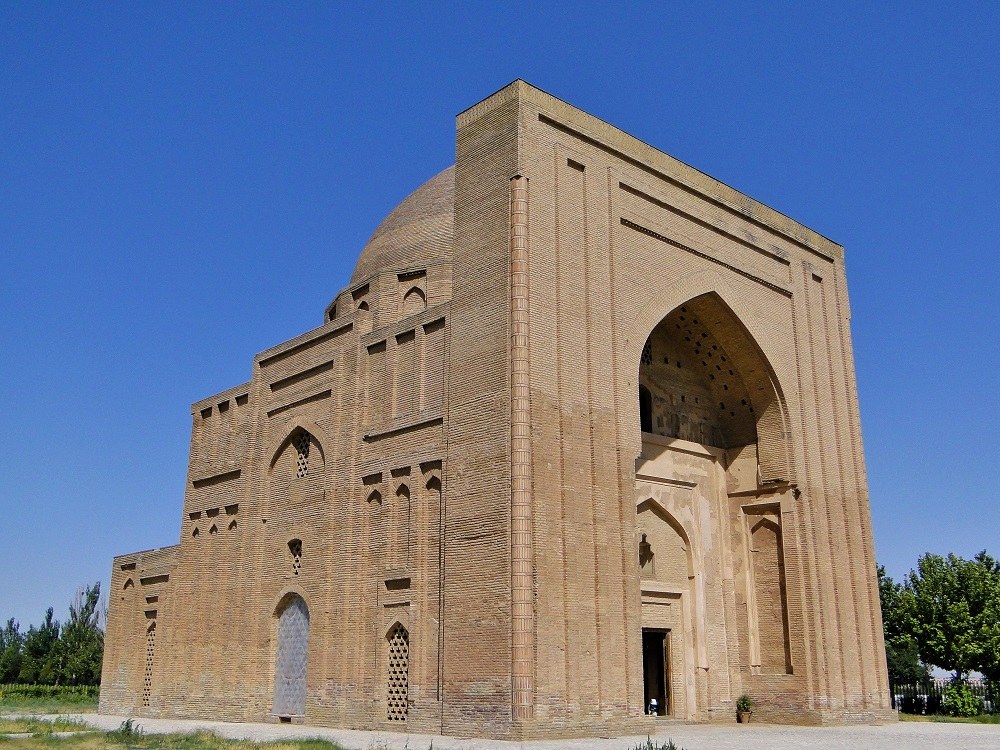
Dating back to the 14th and 15th century, the Haruniyeh Dome is another building showing Tous cultural landscape. The building is located twenty kilometers northwest of Mashhad City and at the entrance to Tous. The architecture of the Haruniyeh Dome is brick-made and in a square shape.
The interior spaces of this monument consist of an entrance to eyvan, four shah-neshin sections, a dome chamber, and three subsidiary rooms. All are open to tourists. There is also a small memorial stone of Abu Mohammad al-Ghazali in the outer area of the Haruniyeh Dome.
On the other hand, there is also a large rectangular garden designed and built in front of the eyvan. We can find this garden in the original plan too. Regarding the function of this building, some people consider that a monastery and the place where al-Ghazali taught to his disciples, before the Mongols’ invasion of Iran. In addition, some people call this building Haron Al Rashid Prison, the fifth Abbasid Caliph.
In terms of structure, size, the diameter of foundations, standing power on the floor and the dome, it has a special architecture of value.
Ancient Walls of Tous & Its Citadel
The Citadel and the ancient walls of Tous are famous as the central citadel or ancient castle of the city. This building is part of the Tous cultural landscape located in the highest part of the city, at the north-west. At some point, this building used to be the administrative center of the government in the ancient city of Tous. Three protecting walls and a moat surround the ancient citadel of Tous.
Here we introduce three city walls:
- The first wall: There used to be a solid wall in the outer part of the moat. There is a barely visible line of a short wall remains there.
- The second wall (internal wall): It is made of standard sun-dried bricks of that time in 23×23×5 cm dimension. The second wall has two gates in the west and southwest, and eight towers in the corners and the sides of the gates, made of sun-dried bricks and cob.
- The third wall (the main wall of the castle): They had made it of sun-dried bricks with two entrances in the west and north. In addition, it has had four towers in the corners and two more towers on either side of the entrances.
Between the second and third walls, there are some remnants of collapsed buildings.
Kashafrud
Kashafrud is a river in Razavi Khorasan Province in north-east of Iran that used to run at the north of Mashhad City. Kashafrud has a rich historical value because it used to be an important trading road connecting Merv, India, and China to the Mesopotamia.
The archaeologists have discovered historical remnants in Kashafrud banks, dating back to some two hundred thousand years. Most of the unearthed artifacts are handmade stone objects for daily use.
The large number of various developments at Kashafrud has made a prominent city out of Tous. Even before the advent of Islam, the outskirts of the river, due to its good climatic conditions, were some of the most interesting areas for settling in Khorasan Province.
Tomb of Mehdi Akhavan-Sales
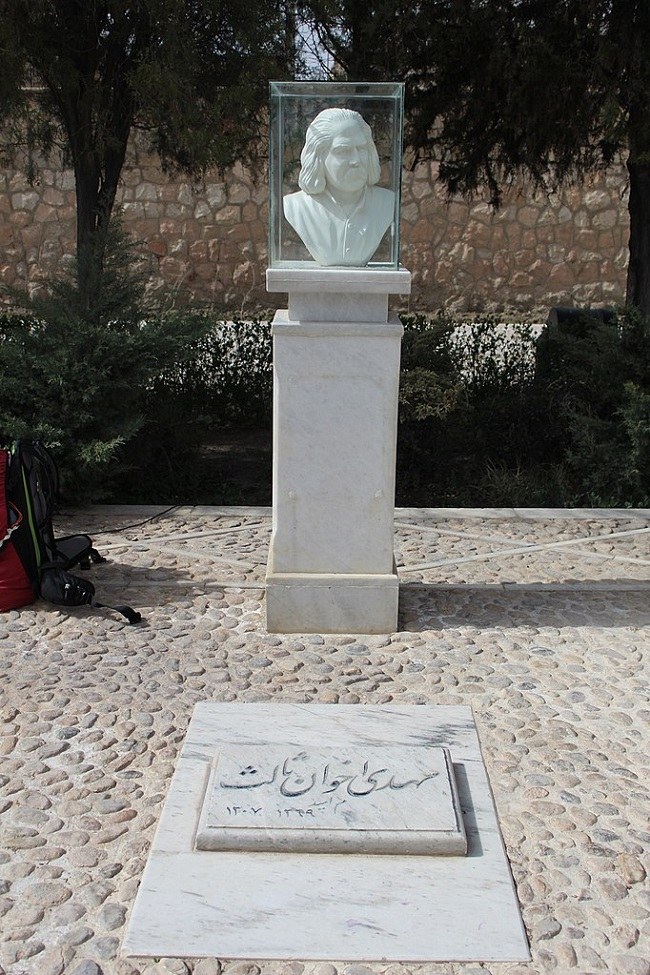
At the end of the Tous Museum, there is a small tombstone belonging to a great Iranian poet of Khorasan Province, Mehdi Akhavan-Sales. Many writers consider Mehdi Akhavan-Sales as the contemporary Ferdowsi of Iran.
AS a matter of fact, the inscription on his tombstone explains the story of his life. The Tous of today owes its cultural landscape to the poems of Akhavan-Sales.
His poems are of social them and, in some cases, describe the people’s living conditions. In terms of literary style, Akhavan followed the epic style combined with strong Khorasani poetry style.
Every year, on August 26 at 5:00 pm, the family and fans of Akhavan-Sales commemorate him at his tomb.
Why You Should Visit Tous
Tous is a historical and cultural symbol of the eastern part of Iran and ancient Khorasan. Many Iranian scholars have played important roles in the scientific growth of Tous including Jabir ibn Hayyan, Muhammad ibn Aslam al-Tousi, Abulqasem Ferdowsi, Shaykh Tousi, and Nasir al-Din al-Tousi. Today, we know the cultural landscape of Tous by its historical monuments and cultural glories.
Hence, it isn’t possible to ignore the role of Tous as the cultural and historical center of Khorasan. In fact, you can get an overview of the culture, art, customs, and traditions of people of Tous by visiting this city and its historical monuments.


